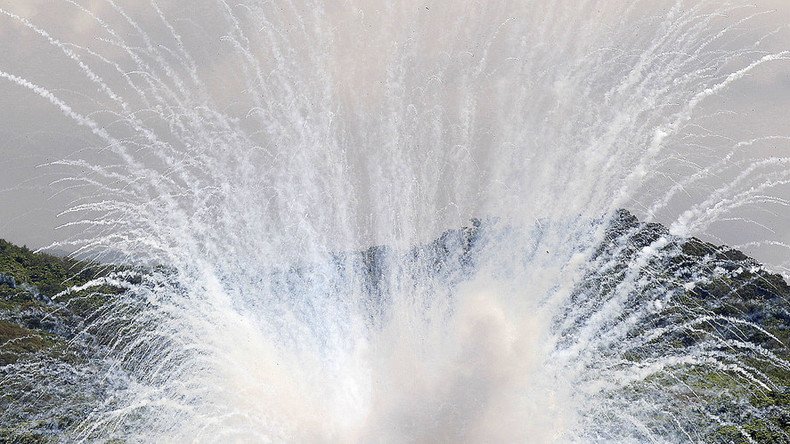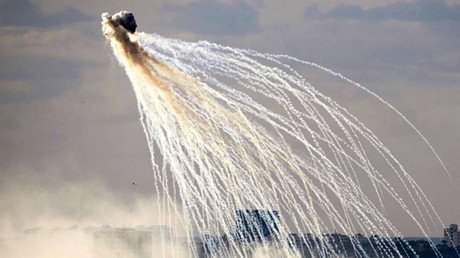'Tempting for armies to use white phosphorous as a weapon'

It’s very difficult to legislate what troops on the ground are going to use these weapons for – whether perhaps in the form of bombs or grenades or perhaps shells in artillery, Charles Shoebridge, a security analyst and former UK army officer, told RT.
US forces are reportedly using white phosphorus against Islamist militants in Iraq, despite widespread the weapon is able to inflict horrific injuries to civilians and soldiers alike.
Images from a Pentagon-run website Dvids show a US Army artillery unit firing white phosphorus munitions in Iraq, identified by the Washington Post as M825A1 155mm shells.
RT spoke with Charles Shoebridge, a security analyst, spoke about the military uses of this munition on the battlefield, and how they can possibly be misused.
"White phosphorous is widely used in armies throughout the world, as well as air forces to create smoke, in other words, to shield the movement of advancing or retreating friendly troops," Shoebridge said. "It’s got little in the way of competition in terms of it being able to very quickly produce very large quantities of smoke. It can also be used as an illuminant because in the night sky it burns extremely brightly, and we’ve seen its use by armies throughout recent history, throughout the world."
Sick Hillary sold these weapons to the Saudis after they donated money to her.https://t.co/Z0YfPPPBLH
— Mike Cernovich (@Cernovich) September 22, 2016
However, these non-offensive uses of white phosphorous can become of serious concern since it can also be used as "an extremely fearsome weapon," Shoebridge emphasized.
"It will burn on contact with air; water won’t put it out immediately. It can burn straight through skin, straight through to the bone and cause horrific and very slow to heal injuries, including, of course, death."
Earlier this month, Amnesty International said white phosphorous was deliberately used by the Saudis against Yemeni Houthi rebels.
In 2014, HRW alleged that the Ukrainian Army deployed “exceptionally cruel” incendiary weapons, including white phosphorus, against anti-Kiev rebels defending the eastern city of Donetsk.
“When white phosphorus is used in attacks in areas containing concentrations of civilians and civilian objects, it will indiscriminately start fires over a wide area,” Mark Hiznay, associate arms director at HRW, told the newspaper.
Shoebridge stated that the use of white phosphorous presents a "complex picture because it does have so-called legitimate uses on the battlefield, unlike some other what might be called chemical weapons."
The security analyst went on to emphasize that the one place the weapons should never be used is "where there are large concentrations of civilians".
"It’s very difficult to legislate what troops on the ground are going to use those weapons for – whether in the form of bombs or grenades or perhaps shells that artillery may have at their command," Shoebridge said. "It’s going to be tempting of course for some troops to use them against enemy forces even if civilians are in the area because they know what the tactical advantages of [the weapons] are."
The statements, views and opinions expressed in this column are solely those of the author and do not necessarily represent those of RT.













